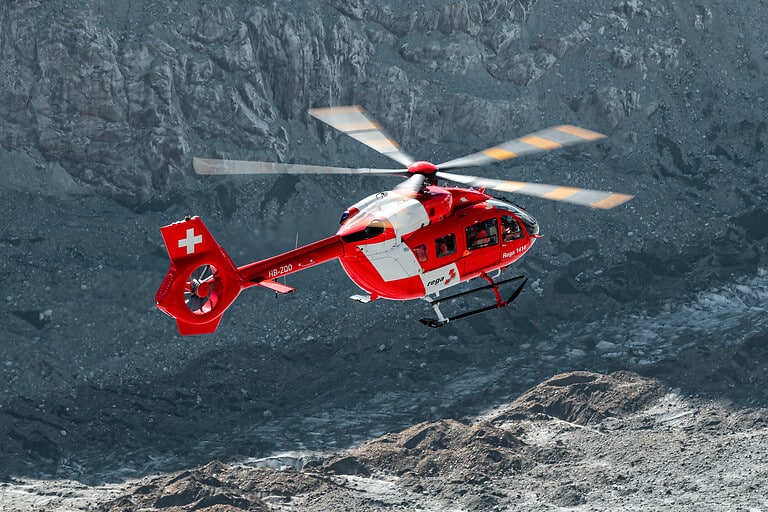Aerospace
The Helicopter Company signs HCare In-Service contract for fleet of 20 H145 helicopters
The Helicopter Company signs HCare In-Service contract for fleet of 20 H145 helicopters

The Helicopter Company (THC), which was founded by the Public Investment Fund (PIF) as the first helicopter services provider authorized to conduct commercial flights in the Kingdom of Saudi Arabia, has signed an HCare In-Service contract to cover their fleet of 20 five-bladed H145 helicopters.
The fleet of H145 helicopters was ordered in December 2021 and will be used for Helicopter Emergency Medical Services throughout the Kingdom of Saudi Arabia. Five have already been delivered, and the remaining 15 are anticipated to be finished by the end of 2024.
The HCare In-Service package has been customised to meet the unique operational requirements of THC and offers them parts availability by-the-hour services to optimize the maintenance and performance of the fleet.
Saudi Arabia to order 40 A350s for new national airline RIA(Opens in a new browser tab)
THC was founded by PIF as part of its strategy to activate new industries in Saudi Arabia that support the realization of Vision 2030 and generate long-term commercial returns, while also meeting the growing demand for luxury travel and tourism services. THC will begin offering its services in 2019. To improve accessibility to domestic tourist destinations and offer services like filming and aerial surveying, THC previously signed contracts to purchase 10 Airbus H125s and six ACH160 helicopters.
The new HCare offer includes three flexible solutions in addition to HCare Initial and HCare Lifetime, including HCare In-Service. For specific fleets, HCare First is offered for Airbus Corporate Helicopters aircraft, while HCare Classics is offered for the legacy fleet’s out-of-production models (H120, Dauphin, Puma and Gazelle).

Aerospace
Boeing Transfers Rocket Stage to NASA, Paving Way for Human Moon Mission

Boeing has achieved a significant milestone by providing NASA with the second core stage of the Space Launch System (SLS) rocket.
This crucial component, crafted at NASA’s Michoud Assembly Facility (MAF), is set to propel the Artemis II crew into lunar orbit, marking humanity’s return to deep space after a 50-year hiatus.
The monumental Boeing-built rocket stage, the largest element of the Artemis II mission, will embark on a journey aboard the Pegasus barge, traveling 900 miles to NASA’s Kennedy Space Center.
Comparison of two legendary aircraft B777x vs B747 aircraft:Click here
Upon arrival, it will be meticulously integrated with other essential Artemis II components, including the upper stage, solid rocket boosters, and NASA’s Orion spacecraft within the iconic Vehicle Assembly Building. This intricate integration process is a vital step toward the eagerly anticipated Artemis II launch, slated for 2025.
“Boeing-built products helped land humankind on the moon in 1969, and we’re proud to continue that legacy through the Artemis generation,” remarked Dave Dutcher, vice president and program manager for Boeing’s SLS program. “Together, with NASA and our industry partners and suppliers, we are building the world’s most capable rocket and paving the way to deep space through America’s rocket factory in New Orleans.”
NASA, Lockheed Martin Reveal X-59 Quiet Supersonic Aircraft:Click here
The delivery of Core Stage 2 marks a significant achievement in the evolution of the SLS rocket. Towering over 200 feet and powered by four RS-25 engines, this core stage, coupled with two solid-fueled booster rockets, will generate a staggering 8.8 million pounds of thrust. This immense power is crucial to launching Artemis II and future missions into the vast expanse of space.
The SLS rocket stands unparalleled in its capability to transport both crew and substantial cargo to the moon and beyond in a single launch. Its extraordinary capacity will facilitate the delivery of human-rated spacecraft, habitats, and scientific missions to destinations including the moon and Mars, ushering in a new era of space exploration.
-

 Travel1 week ago
Travel1 week agoAir India to Expand US Operations with Three New Routes After a Decade
-

 Travel2 weeks ago
Travel2 weeks agoWhy We Should Avoid These Stamps in a Passport
-

 Airlines1 month ago
Airlines1 month agoInvestigations Reveal Fake Chinese Titanium in Boeing and Airbus Jets
-

 Tech4 weeks ago
Tech4 weeks agoChina’s CATL Plans 1,800-Mile Electric Plane Launch by 2027
-

 Airport3 days ago
Airport3 days agoTop 10 Largest Airports in the World by Size
-

 Aerospace4 weeks ago
Aerospace4 weeks agoChina’s Fighter Jets Turn Wings into Autonomous Drones
-

 Airlines4 days ago
Airlines4 days agoAir India Rolls Out A350s for Delhi-New York JFK and Newark Routes
-

 Defence3 weeks ago
Defence3 weeks agoBoeing Enhances Chinook with New Engines and Block II Upgrades at $96 Million







